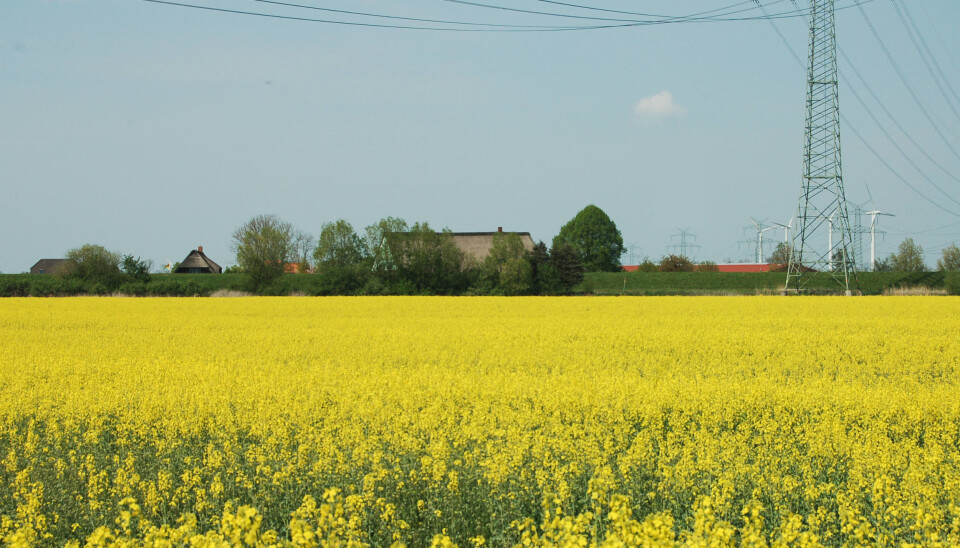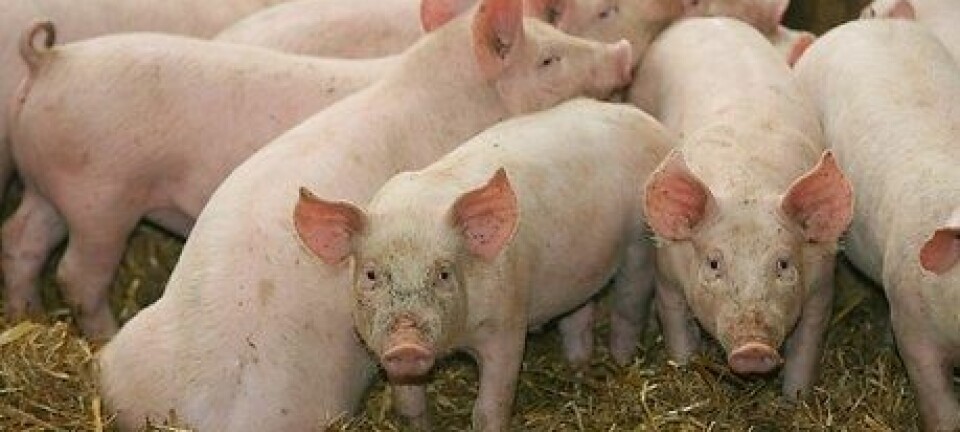
Turning toxic vegetable refuse into nutritious animal feed
New research makes it possible to remove growth-inhibiting natural toxins from protein-rich waste products.
A Danish research team has developed a method that can prevent unwanted toxins in oilseed rape from reaching the edible parts of the plant.
This means that the rapeseed cake – the refuse remaining after the oil has been expressed from the rapeseed – may in the future be used in feed for pigs and poultry on a completely different scale.
“We have developed a new technology that we call transport engineering,” says Professor Barbara Halkier, Head of Center of Excellence for Dynamic Molecular Interactions (DynaMo) at Copenhagen University’s Department of Plant and Environmental Sciences.
“It can be used to remove unwanted substances from edible portions of plants. There’s a great potential in our findings. We can make oilseed rape sustainable like never before.”
Rapeseed plants fill their seed with toxic defence compounds
The researcher explains that all plants produce toxins to defend themselves against disease attacks and herbivores. One example is rapeseed (Brassica napus), which, like radishes, cabbage, broccoli and rocket, belongs to the so-called cruciferous vegetable family.
There’s a great potential in our findings. We can make oilseed rape sustainable like never before.
Barbara Halkier
”Plants from the cruciferous vegetable family produce compounds known as glucosinolates to defend themselves with,” she says.
“Since their roots are planted firmly in the soil, they can’t run anywhere. The glucosinolates generally repel insects, microorganisms and larger animals, but can also be used for attracting beneficial insects.”
Halkier and her colleagues have been studying thale cress (Arabidopsis thaliana), which is closely related to rapeseed, but has a very small genome and a lifecycle of only eight weeks. This makes it an ideal model plant for research.
“We have identified the two proteins responsible for transporting the glucosinolate from the plant’s leaves and stems into the seeds. First, we zoomed in on some possible candidates and then we created a version of the plant that lacked the genes for these proteins to investigate if there was a change in the glucosinolate content in the seeds.”
We have identified the two proteins responsible for transporting the glucosinolate from the plant’s leaves and stems into the seeds. First, we zoomed in on some possible candidates and then we created a version of the plant that lacked the genes for these proteins to investigate if there was a change in the glucosinolate content in the seeds.
Barbara Halkier
And indeed there was. The plants that lacked the two suspected proteins had no glucosinolate at all in the seeds.
“I’ll never forget the day we saw the zero result on the screen. It was a lot more than we could possibly have imagined,” says Halkier.
Rapeseed cake replaces soybean cake
The underlying problem is that one of the glucosinolates found in rapeseed makes the seeds unfit as animal feed in larger amounts:
”Animals that have only one stomach, such as poultry and pigs cannot tolerate large amounts of rapeseed cake. This is because of a glucosinolate that has a growth inhibitory effect. That’s a shame, because rapeseed cake is rich in proteins.”
Our new technology makes it possible to develop many different strains. Since the technology stops the glucosinolate from entering the seeds, breeders can now focus on the yield without having to worry about high levels of glucosinolates in the leaves and stems.
Barbara Halkier
A lot can be gained if one can succeed in developing a rapeseed plant that has no glucosinolates in its seeds, but where the remaining plant is still full of defence compounds.
As things stand now, farmers can only use a very small amount of rapeseed cake in their pig feed. Instead, Nordic farmers import tons of a similar product, soybean cake, which does not contain the harmful glucosinolate.
The rapeseed plant can still defend itself
The new technology will not render rapeseed plants with no glucosinolate in their seeds defenceless.
The plants that the scientists have grown contain elevated levels of the natural defence compounds in all parts of the plant, except in the seeds. The leaves and stems are jam-packed with glucosinolates, which strengthen the plant’s defence.
”When you deal with plant breeding, it’s usually all about the yield,” says Halkier. In today’s rapeseed breeding, the strains that give the highest yield typically have a high content of glucosinolate. That’s problematic, as the breeders need to drop many of these new strains.”
In this way, the new breakthrough gives breeders a free hand:
“Our new technology makes it possible to develop many different strains. Since the technology stops the glucosinolate from entering the seeds, breeders can now focus on the yield without having to worry about high levels of glucosinolates in the leaves and stems.”
Results in the fields
Rapeseed and thale cress are so closely related that it’s relatively easy to transfer the technology from the researchers’ model plant to rapeseed.
The research group has therefore teamed up with Bayer CropScience, which is one of the world’s largest producers of rapeseed for sowing.
The method has so much potential, and so much effort is being put into refining it that Barbara Halkier reckons that we’re likely to see the first rapeseed field with glucosinolate-free seeds within the next decade.
This study has just won the '2012 Research Result of the Year' award, hosted by Danish science news magazine – and ScienceNordic's sister site – videnskab.dk.
-----------------------------------
Read the Danish version of this article at videnskab.dk
Translated by: Dann Vinther








